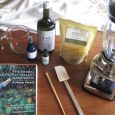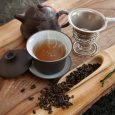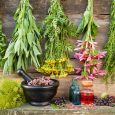Planning Your Herb Garden
If you’re anything like the average herb gardener, it can be mind-boggling looking through seed catalogs and trying to choose just a few varieties to plant. There are so many types of herbs to plant – you’re probably tempted to plant almost all of them! But most of us don’t have the space to plant that many, or the time or energy to care for them all.
There are three basic types of herbs – herbaceous, evergreen, and annual. The type of herb will depend on how it grows, what type of plant it is, and its habits. Herbaceous herbs are perennial. They die back during the winter, but some back again in the spring.
Some common herbs of this type include oregano, tarragon, bee balm, mint, chives, sweet fennel, and winter savory. They don’t need to be pruned; you just clip them off at ground level at the end of the season.
They can even be mowed down with a mower. Always be careful with mint. It spreads quickly, and can take over an entire garden if you let it. Evergreen herbs are perennial herbs that require pruning if you don’t harvest them regularly.
They should be pruned every fall or early in the spring. Evergreen herbs include sage, rosemary, and thyme. When you prune, you should only clip those branches that are old and don’t show any signs of new growth. Any that are broken or lying on other branches should also be pruned.
When you harvest evergreen herbs, you should be careful to cut only one section of leaves at a time, and only cut it back to where new growth is still showing. You don’t want to cut too much, or you could discourage new growth.
Annual herbs include basil, cilantro, parsley, dill, and chervil. They must be planted again every year, because they won’t come back after they die. If you want a continual harvest of annual herbs, you have to keep planting them every four to six weeks during the season.
You should try to snip off any flower buds you see on annual herb plants, because after a plant flowers, it usually won’t continue to produce leaves. After they flower, they go to seed, at which point they’re not really useful for producing leaves for your kitchen anymore.
When planning which types of herbs you wish to plant, you should choose only those varieties which you believe you’ll actually use in cooking. It will probably be very tempting to plant at least one of every type of herb you see, but it’s not practical.
Plant those herbs which you know you’ll really use. And keep in mind that some herbs are considered better when dried. Sage, for example, is an herb that many people prefer the flavor of when dried.
It’s probably better to just purchase those herbs which you already know you like to use fresh, as well as perhaps one or two you’ve never tried before just to test out. Be careful not to plant too many types that you can’t take care of them all.
Although herbs don’t generally require a lot of care and maintenance, they will need a bit of work. Don’t plant twenty different varieties if you realistically only have time to care for five or ten!
Finally, be sure to check the zones that various herbs do well in. If your favorite herb doesn’t do well in your zone, you should probably skip it, or at least grow it indoors in a container. There isn’t much use planting an herb if it will likely die before it’s harvested.
Recommended Herb Gardening Products

















